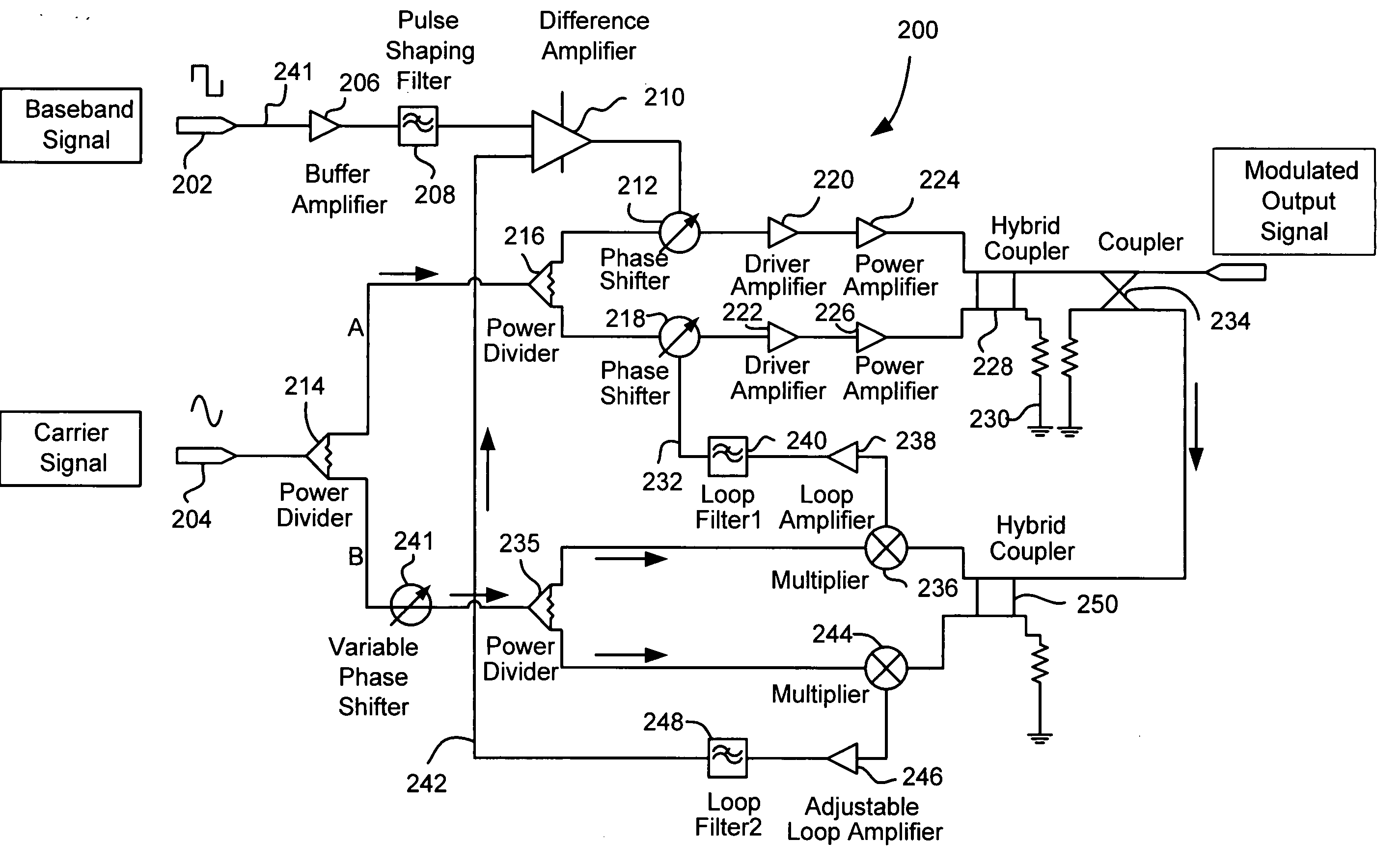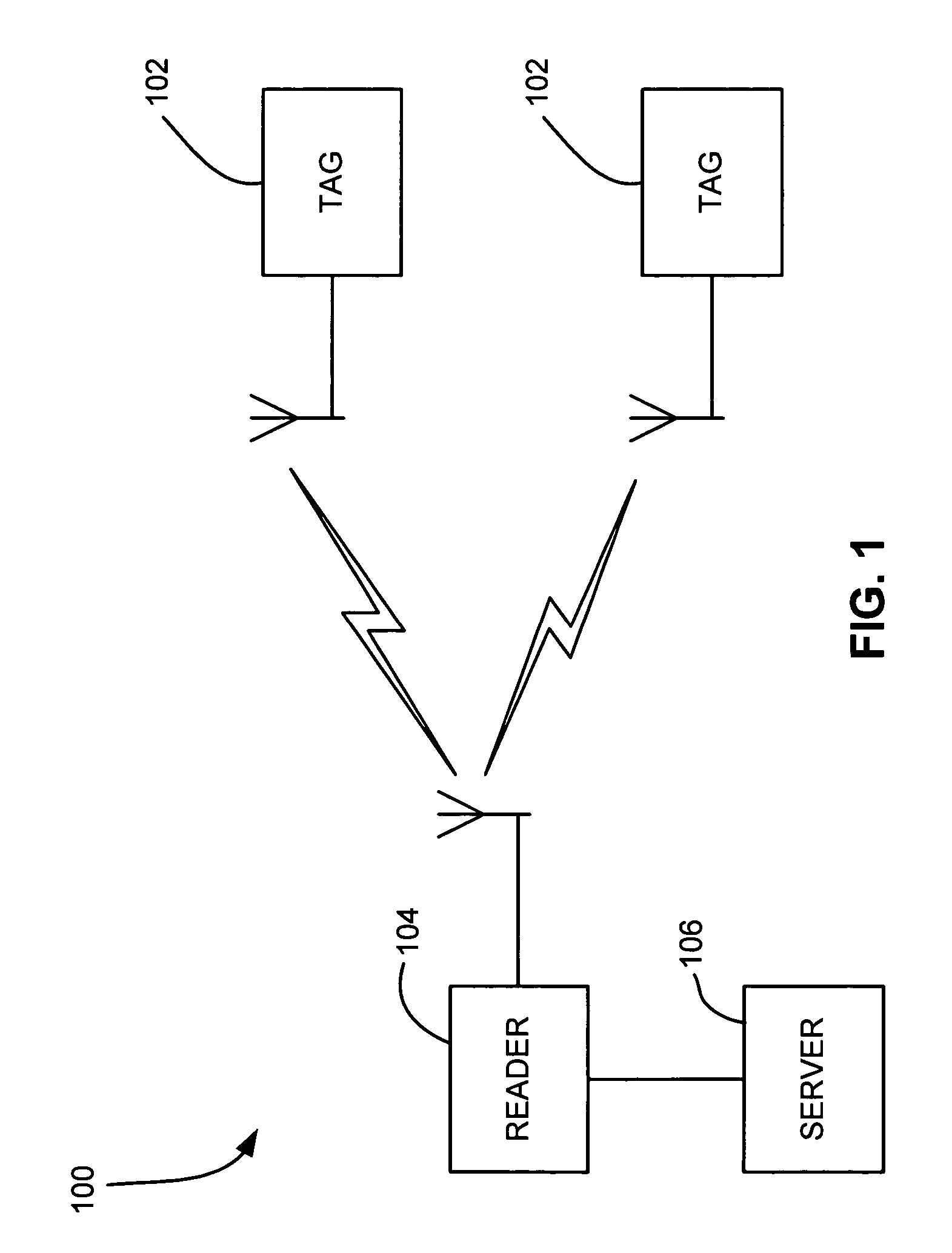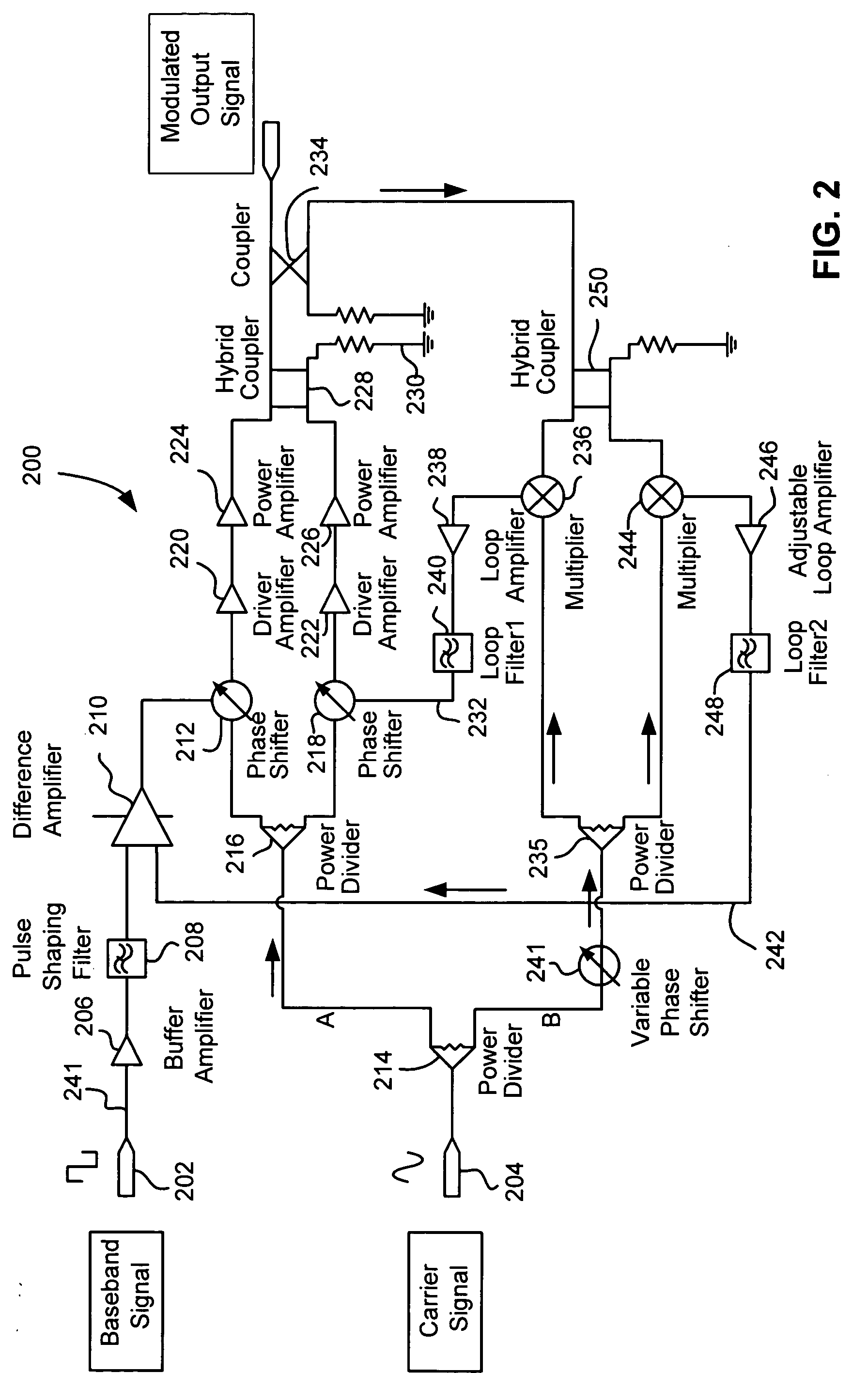Amplitude modulator
a modulator and amplitude technology, applied in the direction of modulation, amplitude demodulation, digital transmission, etc., can solve the problems of large power consumption, large linearity constraints on the output stage amplifier, and the smallest bandwidth possible for the radio frequency carrier modulation by which information is transmitted
- Summary
- Abstract
- Description
- Claims
- Application Information
AI Technical Summary
Benefits of technology
Problems solved by technology
Method used
Image
Examples
Embodiment Construction
[0020] The following description is the best mode presently contemplated for carrying out the present invention. This description is made for the purpose of illustrating the general principles of the present invention and is not meant to limit the inventive concepts claimed herein. Further, particular features described herein can be used in combination with other described features in each and any of the various possible combinations and permutations.
[0021] In the drawings, like and equivalent elements are numbered the same throughout the various figures.
[0022] The following specification describes a nonlinear amplifier driven, low phase noise amplitude modulator with virtually no residual phase shift. The amplitude modulator is particularly adapted to implementation in or as a class C operated device which exhibits low power consumption but does not exhibit the distortion traditionally found in class C devices.
[0023] Many types of devices can take advantage of the embodiments d...
PUM
 Login to View More
Login to View More Abstract
Description
Claims
Application Information
 Login to View More
Login to View More - R&D
- Intellectual Property
- Life Sciences
- Materials
- Tech Scout
- Unparalleled Data Quality
- Higher Quality Content
- 60% Fewer Hallucinations
Browse by: Latest US Patents, China's latest patents, Technical Efficacy Thesaurus, Application Domain, Technology Topic, Popular Technical Reports.
© 2025 PatSnap. All rights reserved.Legal|Privacy policy|Modern Slavery Act Transparency Statement|Sitemap|About US| Contact US: help@patsnap.com



